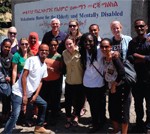Prior research has found that the use of surgery to treat osteoarthritis is increasing, while more conservative treatments, such as physical therapy, are underused. This disparity drove researchers to examine what influences a patient’s treatment choice. They found that a treatment’s characteristics—including a patient’s expectations for effectiveness and risk—affect decision making. Other influences: personal investment and circumstances, as well as support and advice from social networks and healthcare providers…

Carpal Tunnel Syndrome: Is Post-Surgical Rehabilitation Helpful?
A recent research review compared the results of various studies on rehabilitation treatments, including immobilization, exercise and cold therapy, for patients with carpal tunnel syndrome after surgery. The authors concluded that little evidence supports the effectiveness of rehabilitation techniques, and many of the studies reviewed have similar limitations…

Rheumatologists, Physical Therapists Partner to Offer Patients Pain Relief, Improved Quality of Life
When rheumatoid arthritis (RA) left Stefanie Gluckman fighting chronic pain and relegated to a wheelchair, she turned to Lori Rubenstein Fazzio, DPT, PT, MAppSc, YTRX, of Mosaic Physical Therapy in Los Angeles, for relief. Dr. Rubenstein Fazzio knows what it’s like to suffer from excruciating pain. After sustaining career-threatening injuries in a horseback accident in…

American Physical Therapists Collaborate with Local PTs in Ethiopia
Ethiopia has a rich, variable and distinguished history and landscape. Located in the Horn of Africa, it shares borders with Eritrea, Djibouti, Somalia, Kenya, Sudan and South Sudan. Ethiopia has claim to the oldest humanoid fossils, named “Lucy,” which were discovered in 1974 and are estimated to be 3.2 million years of age.1 The country’s…

Exercise Guidelines for Fibromyalgia Patients
Fibromyalgia syndrome (FMS) is a condition characterized by widespread pain, abnormal pain processing, sleep disturbance and fatigue. It is commonly associated with psychological distress and co-morbid conditions. Impaired cognition is common in individuals with FMS, and is often referred to as fibrofog.1 According to the U.S. Centers for Disease Control and Prevention, the prevalence of…
E-Learning in Physiotherapy
A physiotherapy-specific, Web-based e-learning platform, “RAP-el,” was studied to determine its effectiveness in assisting physiotherapists with the best-practice management of rheumatoid arthritis (RA). It was shown to improve self-reported confidence, likely practice behaviors and satisfaction in physiotherapists’ ability to manage people with RA, and improve their clinical knowledge in several areas…

Physical Therapy, Exercise Advances for Knee Osteoarthritis
Millions of adults suffer from painful knee osteoarthritis (OA). Although physical activity can help improve pain and reduce functional limitations, many people with OA are physically inactive. For people living with knee OA, it can be difficult to get started with or continue on a physical activity program, because pain and other symptoms can make…
Ethical, Regulatory Issues Raise Patient Care Dilemmas for Physical Therapists
How to develop strategies for optimal patient care within confines of contemporary payment systems
Physical Therapy Helps Patient with Hip Pain Avoid Surgery
Radiographs reveal greater trochanteric calcific bursitis; guide targeted treatment
How Manual Physical Therapy Can Help Rheumatology Patients
A physical therapist explains the benefits of functional dry needling, specific soft-tissue mobilization, myofascial release, and joint mobilization and manipulation techniques